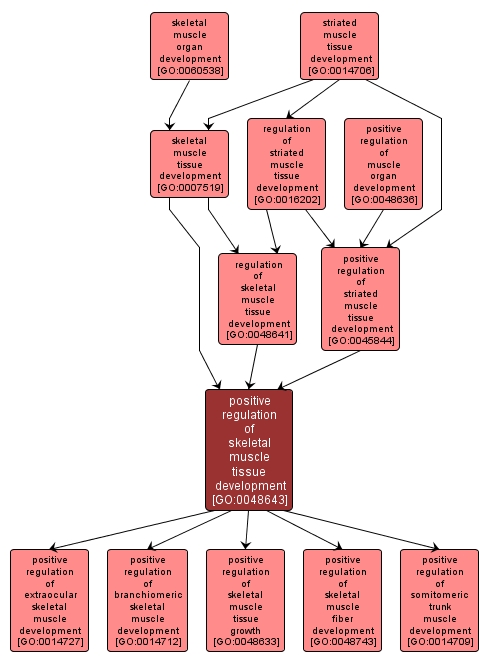GO TERM SUMMARY
|
| Name: |
positive regulation of skeletal muscle tissue development |
| Acc: |
GO:0048643 |
| Aspect: |
Biological Process |
| Desc: |
Any process that activates, maintains or increases the rate of skeletal muscle tissue development. |
Synonyms:
- upregulation of skeletal muscle development
- up-regulation of skeletal muscle development
- up regulation of skeletal muscle development
- activation of skeletal muscle development
- stimulation of skeletal muscle development
|
|

|
INTERACTIVE GO GRAPH
|














